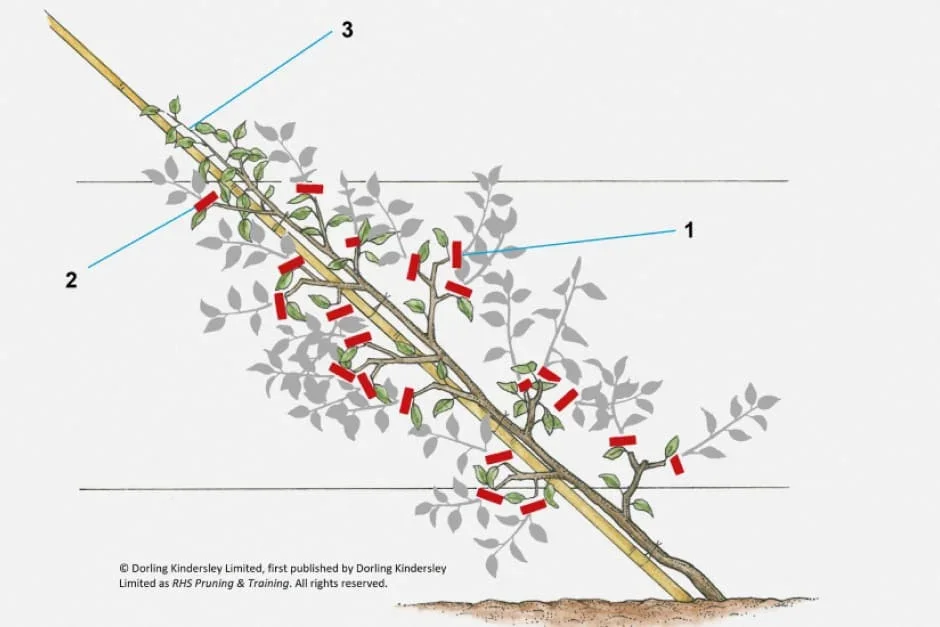Winter Pruning: The Key to Healthier Trees and Juicier Harvests
As the colder months set in, many gardens across Kent and East Sussex fall into a quiet rhythm. But while growth above the soil slows down, winter is actually one of the most important times of year for your garden — especially your fruit trees. Pruning during this season is not just routine maintenance; it’s an essential step in ensuring healthy growth, stronger plants, and bigger, juicier harvests come spring and summer.
Why Winter is the Best Time to Prune
When fruit trees and shrubs are dormant, they’re less stressed by pruning. This means:
Faster healing – cuts close quicker, reducing the risk of disease.
Better structure – pruning shapes the tree while it’s not actively growing, leading to stronger branches.
Encouraged fruiting – removing old or crowded growth redirects energy into producing better-quality fruit.
Pruning in the growing season can put unnecessary strain on plants, but in winter, the process works with nature, not against it.
The Benefits of Pruning for Fruit Trees
Improved Harvests – By thinning out branches, more light and air reach developing fruit, giving you larger, juicier apples, pears, and plums.
Disease Prevention – Proper pruning reduces the chance of fungal infections and pests, keeping trees healthier long term.
Stronger Growth – Pruned trees put their energy into productive branches rather than weak or overcrowded ones.
Garden Appearance – A well-pruned tree looks neat, balanced, and attractive year-round.
Which Plants Should You Prune in Winter?
Apple Trees
Pear Trees
Cherry Trees (sweet and sour)
Plum Trees
Gooseberries & Currants
Grape Vines
Even ornamental shrubs and roses benefit from careful pruning, helping them bloom stronger when warmer months return.
Why Pruning & Training Style Matter for Fruit Trees
Pruning and training a fruit tree is not just about cutting back growth — it’s about shaping the tree so it produces better fruit, stays healthy, and fits the space you have. Different systems (cordon, espalier, fan, etc.) affect light penetration, airflow, ease of harvesting, and fruit yield. The wrong style or a neglected tree can lead to overcrowded branches, poor fruiting, and disease.
Cordon Training (Single-Stem or Slanted Cordons)
What is a cordon?
A cordon is a training method in which the tree is largely a single stem (or very limited branching) with fruiting spurs along that stem. Often the tree is planted at an angle (e.g. 45°) or tied to a support.
Advantages
Takes up minimal horizontal space
Easier to maintain and prune in tight gardens
Earlier fruiting because less energy is wasted on large structures
Key pruning / training rules
All side shoots are removed except the fruiting spurs.
Annual spring tip pruning: cut back the main stem slightly, maintain vigour.
In summer, cut back laterals to 2–3 buds or leaves to encourage spur growth.
Because cordons use a single stem, selecting spur-bearing varieties is crucial; tip-bearing varieties don’t suit well under a strict cordon regime.
Considerations
Cordons need strong support (wires or wall) and are less forgiving in terms of vigor control. They are not ideal for vigorous cultivars.
Espalier Training
What is an espalier?
Espalier is a technique of training a tree flat against a wall, fence, or trellis in two dimensions (a plane). Branches are tied to support wires or frameworks, and pruning encourages the tree to stay in that flat shape.
There are many variations: horizontal tiers, candelabra styles, fan, palmette, step-over (one level only), etc.
Benefits
Maximises light exposure (especially when on a wall)
Conserves garden space
Easier to manage, prune, spray, and harvest
Many espaliers can act as ornamental elements in the garden
Pruning & maintenance
Winter (dormant) pruning: reduce long shoots to desired length, maintain structure, thin overcrowded wood
Summer pruning: regularly snip new shoots to maintain the shape. Espaliers can quickly get out of shape if neglected. Fine Gardening+2RHS+2
Tie branches to wires, encourage branches to grow along wires, and suppress growth out of the plane
In fruiting years, maintain fruiting spurs and renew older wood gradually RHS+1
Challenges
If training is neglected, espaliers can become unbalanced (upper parts overly vigorous, lower parts die back). Restoring shape can be difficult without starting over.
Fan Training
What is the fan system?
A fan is a subtype of espalier: a short central stem (or none) with branches radiating outward in a fan shape. Especially useful for stone fruits (e.g. plums, cherries) which have more tip bearing habits.
Pruning & training
Train the new shoots to radiate from the base
Annual pruning to keep the arms balanced and open
Because stone fruits often fruit on younger wood or tips, it's typical to use both summer pruning (to encourage new shoots) and winter pruning to manage shape
Remove crossing branches, maintain airflow
Use cases
Good where a flat wall or fence is available, especially for fruiting stone trees which tend to have branching closer to the trunk.
Book Your Winter Pruning Today
Don’t leave your fruit trees to chance. Winter is the window of opportunity to set your garden up for success. Whether you’re in Tunbridge Wells, Sevenoaks, Tonbridge, or across East Sussex, Greenacre Landscapes is here to help.
Contact us today to book your winter pruning and enjoy healthier trees and a bumper harvest next year.






